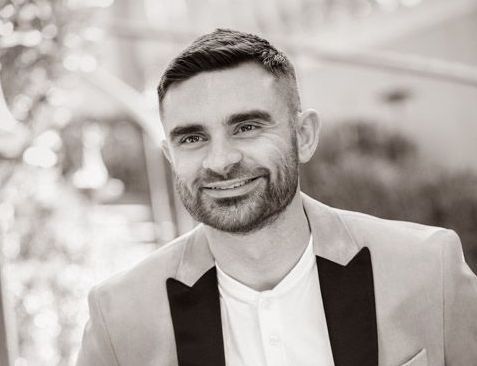



Get new exclusive access to healthcare business reports & breaking news




By Nicholas Mathews
Advancements in technology have made the world much smaller and more connected, opening new possibilities for the treatment of substance abuse and mental health disorders. For example, just consider recent advances in telehealth, electronic medical records, and applications designed to support recovery.
As the co-founder of Stillwater Behavioral Health, a dual diagnosis treatment facility that helps people with substance addiction and mental health disorders, I know that traditional recovery methods, such as counseling, support groups, and medication still play a central role in the overall journey to sobriety. Yet I’ve also been on the frontline of improving care and outcomes with technology in 2022.
Related: Digital Opioid Addiction Treatment Platform Boulder Gets $10.5m in Series A
One of the most significant factors in making sure behavioral health is successful for people struggling with addiction in 2022 is the issue of access to care. If getting help is too difficult, outcomes are going to be less than satisfactory. Technology services such as video conferencing or telehealth applications can help.
Full-service behavioral health facilities may be few and far between in a given area, especially if the patient lives in a rural location. Where challenges related to transportation or geographic location pose problems, video conferencing or telehealth technology can be integrated into a care plan to make access to providers and people in recovery easier. These services can bring top-notch providers to people without them needing to travel, take time off work, or be away from their families. When providers are connected with video conferencing ability and electronic records, the ability to share information allows for more efficient care.
One of the biggest barriers to quality care for people experiencing drug addiction or mental health issues is cost. In-patient rehabilitation can run as high as $6000 to $20,000 for a 30-day stay. Outpatient care can still run between $5000-$6000, depending on the plan.
The one constant with telehealth services and apps is their cost-effectiveness for patients. Despite a high cost associated with the development and initial set-up of telehealth platforms, the price is significantly decreased once these are up and running.
With COVID prompting government intervention in healthcare costs, grant money has been allotted for telehealth services, and insurance companies are allowing better telehealth reimbursement. As recovery technology becomes more commonplace, the coverage for such methods will, with any luck, catch up to the usage.
Related: Illinois Ramps Up Fight Against Opioid Epidemic with Expansion of Telehealth Services
At a time when people communicate through their smartphones and genuinely consider social media “socializing,” perhaps it was only a matter of time before healthcare started using apps and social media platforms to bring support and care to the people who need it.
A big part of the recovery process is marking milestones, and technology can assist in this endeavor. Apps such as Alcoholic Anonymous’ Sobriety Calendar allows patients to track their days, months, and even years of sobriety. Sober Grid is another tool people can use to track their progress and share it with others. It also provides round-the-clock access to support based on location. Nomo is an app that connects people in recovery to others in their support groups. It also features a sobriety-tracking function.
People in recovery can still receive the standard momentos of sobriety, like chips and coins. But integrating technology in their journey as milestone markers can allow them more engagement in the act of getting sober. Being able to share those milestones with others builds the person’s support group as well.
Recently released e-recovery apps have been shown to be effective in treating people with addictions. Examples such as RecoveryBox and Quit Genius offer the ability to monitor one’s own care, schedule prompts to take necessary actions, and connect to sources of support. Some can even let people know via GPS if they are near historically high-risk areas, such as where they used to go to buy drugs.
E-recovery apps also allow people in recovery to connect to their providers instantly. Studies have shown that these apps can help reduce relapses by 31% and re-hospitalization by 71% when added to a larger recovery care plan. Relapses were also 50% less severe.
These tools may be so effective because struggling with an addiction or mental health crisis can be very isolating. Making social media or a helpful app a part of a person’s care plan can help draw out an introverted patient or meet a person where they are socially. Younger people are especially adept at using the latest apps and platforms for everything from ordering food to banking, so integrating apps into their recovery program can often be seamless.
Related: Quit Genius Bags $11m in Series A to Fight Addiction
Artificial Intelligence (AI) is having a moment, and virtual reality is starting to make its way to the healthcare space as well.
AI is part of our everyday lives. Developers and recovery experts alike are seeing its usefulness in addiction treatment. For example, an app called Addicaid combines artificial intelligence with clinical research to help predict instances of relapse. This app is so intuitive that it can send support resources and/or cessation methods if it senses the person has entered a bar. In this way, algorithms and advanced AI science can respond to one the most significant issues in recovery: negative influences.
Once thought of as little more than a gimmick or toy, virtual reality technology has improved immensely in the last decade. With new virtual reality systems, people can immerse themselves in different places. So how does virtual reality play into rehabilitation efforts for people with addictions?
When people are mired deep in addictive behaviors, they can lose their confidence and harbor powerful feelings of self-doubt and self-loathing. The use of virtual reality therapy can allow people to “try on” scenarios in which they resist temptation. This helps them gain confidence in virtual situations before having to face them in real life. Virtual reality also provides a gateway to meditate in a calming environment.
Video games have also been developed that simulate forcefully refusing the addicted person’s vice, whether alcohol, drugs, or other addiction. The Take Control game is considered partially immersive and gives the “player” movements like punching and kicking to “knock out” their addictions. In studies with people in recovery, participants found the game engaging and fun. They felt it would help in recovery when paired with other recovery tools, such as counseling.
Neurofeedback technology, though still in its infancy when used for people in recovery, has been shown to be effective in early studies for opiate and other addictions.
One of the features of the human brain is neuroplasticity, which means our neural networks can change and create new patterns. If given enough time and reinforcement, new pathways of neurons can become sustainable. Neurofeedback technology taps into this ability, using Electroencephalography (EEG) biofeedback in an attempt to “retrain” the brain. This is how it works: Electrodes attached to a patients’ head read brainwaves. A computer sends the brain positive “feedback” based on specific brainwaves.
Addicts are addicts because they become over-stimulated by certain influences: the effects of alcohol or drugs on the body. Neurofeedback technology trains people to calm themselves without using substances by rewarding this self-soothing behavior. The brain comes to seek this reward, thereby learning to self-soothe naturally.
The brain is a powerful organ, and sometimes all it needs is a little prompting to start a person on the road to full recovery. Neurofeedback technology provides that prompting.
No single approach to treatment is as effective on its own as a layering of treatment options may be. In my experience, people are most successful in treatment when they have a strong support system. While building a sense of community and helping people form connections with others is key, integrating technology can undoubtedly play a part.
What will work for one person may not work for another, however. Some patients in recovery may have remarkable outcomes with an app that tracks their days sober, while others may not get value from that technology. When working with people, you have to take their unique personalities and abilities into account. Some people are very tech-savvy, and some experience technology as a barrier.
That said, each new technological advance opens up possibilities for helping people preserve their sobriety.

